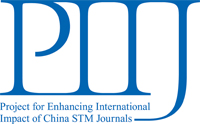Efficacy of equine-assisted psychotherapy in veterans with posttraumatic stress disorder
L. Elisabeth Burton, Fares Qeadan, Mark R. Burge
Journal of Integrative Medicine. 2019, 17(1):
14-19.
doi:10.1016/j.joim.2018.11.001
 Abstract
(
1928 )
HTML
Abstract
(
1928 )
HTML
 PDF
Related Articles |
Metrics
PDF
Related Articles |
Metrics
Background
Posttraumatic stress disorder (PTSD) is a common and debilitating disorder among war veterans. Although complementary and alternative therapies are gaining acceptance in the treatment of PTSD, the efficacy of animal-based therapies in this disorder is unknown. The goal of equine-assisted psychotherapy (EAP) is to improve the social, emotional, and/or cognitive functions of individuals with PTSD.
Objective
This study aims to explore the effects of EAP on PTSD symptoms. We hypothesized that veterans with PTSD who participate in a standardized EAP program for 1 h per week for 6?weeks would experience decreased PTSD symptoms and would demonstrate increased resilience as compared with individuals who do not receive EAP intervention.
Design, setting, participants and interventions
We conducted a sequentially assigned, two-arm parallel group trial comparing 6?weeks of EAP with standard, previously established, ongoing PTSD therapy. Therapy was conducted at a community EAP facility in conjunction with an academic University Hospital. Twenty adult veterans with symptomatic PTSD completed the study. Ten adult veterans with previously diagnosed PTSD were assigned to EAP and received directed interaction with trained horses for one hour a week in groups of 3 or 4 individuals, while also continuing their previously established therapies. A certified therapist supervised the sessions, and a professional horse handler was also present. Results were compared with those from 10 adult veterans who only received their standard previously established PTSD care as prescribed by their provider.
Main outcome measures
Changes in salivary cortisol, scores for the PTSD Check List-Military Version (PCL-M) and the Connor-Davidson Resilience Scale (CD-RISC) after 6?weeks of study were measured.
Results
Of the 20 enrolled patients, 10 served in Afghanistan, 5 served in Iraq, and 3 served in Vietnam. Subjects were (47?±?14)?years old, were predominantly male, and had a body mass index of (29?±?7)?kg/m2. They had (9.2?±?6.1)?years of military service and carried 66%?±?37% service-connected disability. PCL-M scores declined significantly in both groups and CD-RISC scores increased significantly in the EAP group. There was no difference between the groups with respect to the magnitude of change.
Conclusion
As compared to the control group, a 6-week EAP program did not produce a statistically significant difference with respect to PCL-M and CD-RISC scores, or salivary cortisol. However, our results suggest that EAP may work as well as standard therapy with respect to these parameters. This study supports further inquiry into EAP as a potentially efficacious alternative for veterans suffering from PTSD.
Trial registration
ClinicalTrials.gov NCT #03039361.
 Table of Content
Table of Content














